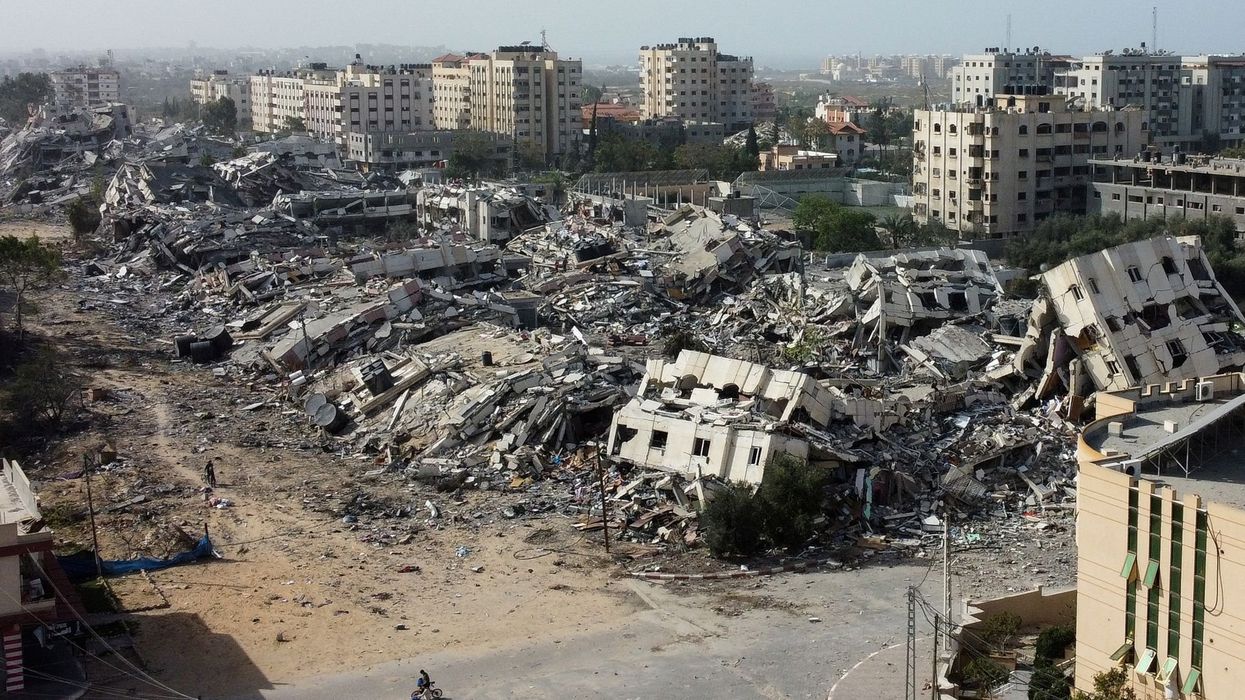
Video Source: Advocate Channel
(CNN) — As the bulldozers worked their way through the remains of the southern Gaza town of Al Qarara on Sunday morning, a group of people watched with anxiety.
They were hoping the truce between Hamas and Israel would allow enough time for the bodies of their loved ones to be recovered from underneath the rubble.
Then they can finally be buried.
For nearly seven weeks, most people in the Gaza Strip have been just trying to survive, focusing on the basics: finding shelter, fleeing the fighting, getting access to food and water.
The pause in hostilities has given Gazans a moment to breathe – and take stock of the devastation around them.
The town of Al Qarara is in the southern Khan Younis governorate, an area that has seen a marked increase in the damage to buildings in the past two weeks, according to analysis of radar satellite data.
CNN footage from Deir El Balah, a city in central Gaza, showed thousands of people flocking to the streets and going to the market, trying to buy supplies that were out of reach for many weeks but are now – if only perhaps temporarily - available again.
Speaking to CNN in the market, residents of Deir El Balah told of the relief they felt when the truce came.
One woman, called Um Ihab, said Sunday was the first time she had been out with her family. “We were always afraid of going out and being struck by rockets and airstrikes. But since the first day of the ceasefire, we have been able to go buy what we need safely,” she said. “For 47 days, we were living in war and fear. Our kids were terrified.”
Another resident, Um Mohammad, told CNN that prices have skyrocketed during the war.
“Everything seemed very expensive, not like before (the war),” she said, adding: “We thank God that at least we can come and feel safe.”
The market had been deserted for most of the past seven weeks, with most shops closed and people afraid to go out. On Sunday, it was buzzing with activity, shoppers rushing out to stock up, children running around among the stalls with vegetables, garbage piling up on the sides of the streets.
“We hope that the ceasefire can be permanent and that (Israeli forces) will withdraw from the north, so all those who were forcibly displaced can go back home, even if they go back to tents,” Abu Udai, another local resident, told CNN.
Yet for many in Gaza, the truce brought heartache as they were able to see the full scale of the devastation for the first time. The weeks of fighting have left entire neighborhoods leveled to the ground. Thousands of people have been killed.
Of the 2 million people living in Gaza, 1.7 million are internally displaced, according to the United Nations Relief and Works Agency for Palestine Refugees (UNRWA).
The situation is most dire in northern parts of Gaza, where some civilians have remained despite repeated orders by the Israel Defense Forces to evacuate to the southern part of the Gaza Strip.
As part of the truce agreement, more humanitarian aid is now allowed into Gaza.
On Saturday, 61 trucks delivered food, water, and emergency medical supplies to northern Gaza, according to the United Nations. It was the largest shipment to reach the north since October 7 – but nowhere near enoughto meet people’s needs.
Hamas said on Saturday night the truce agreement could be in danger if sufficient trucks failed to make it to northern Gaza, where the needs are greatest. The dispute over the amount of aid entering Gaza contributed to a brief delay in the planned handover of a group of hostages held by Hamas on Saturday.
UNRWA said Sunday the amount of aid reaching the Gaza Strip remained completely insufficient.
“We need 200 aid trucks a day continuously for two months at least to meet the needs. We need even more fuel so we can operate the services and sectors we support, like water desalination, sewage, hospitals, bakeries and UNRWA services and communications. The aid going in at the moment is just a drop in the ocean of humanitarian needs,” said Adnan Abu Hasna, UNRWA media adviser.
Before the war, about 455 trucks entered Gaza daily with aid supplies, according to the United Nations.
“The (humanitarian) situation in northern Gaza is dangerous, there is no drinking water and no food, so the aid we are sending is important. Today we are also sending convoys towards Gaza City and northern Gaza. The humanitarian situation is dangerous in both southern and northern Gaza,” he added.
The-CNN-Wire
™ & © 2023 Cable News Network, Inc., a Warner Bros. Discovery Company. All rights reserved.
- Social Media Sites Aren't Pushing Pro-Palestine Content — There's Just More Users Posting It ›
- Here Are Ways You Can Help Palestinian Civilians That Aren't Just Donating ›
- Queering the Map in Gaza: LGBTQ+ Palestinians Pay Tribute to Deceased Loved Ones ›
- Gaza Hospitals Forced to Halt Operations, 'Safe Havens' Become 'Scenes of Death' ›


















































